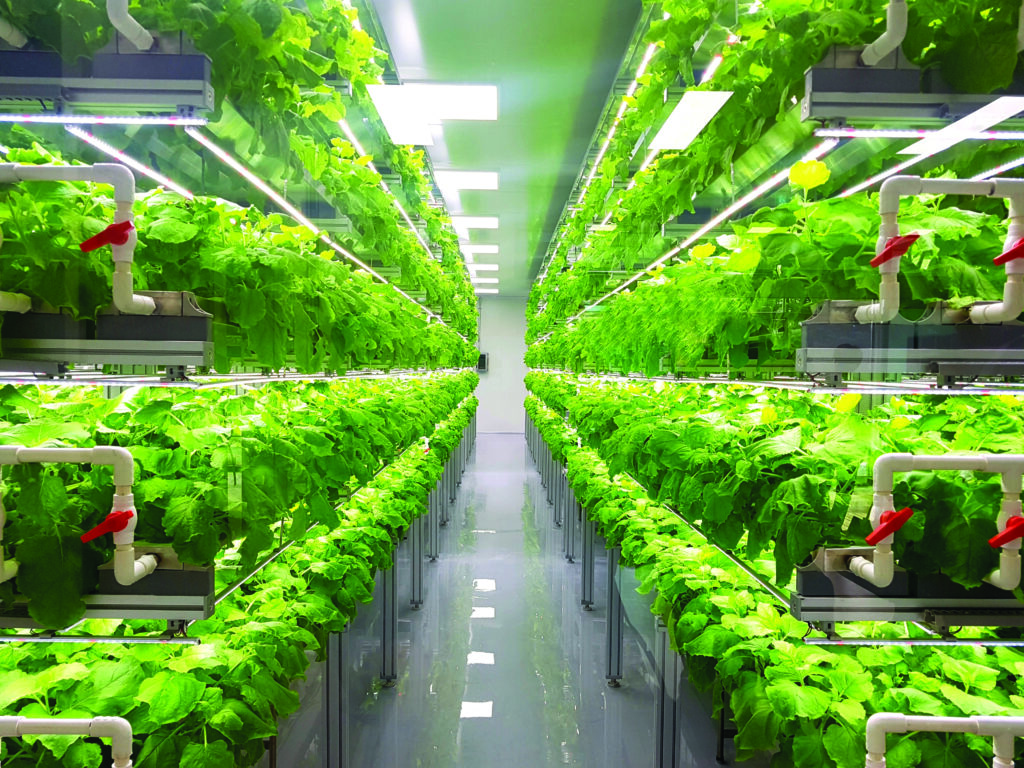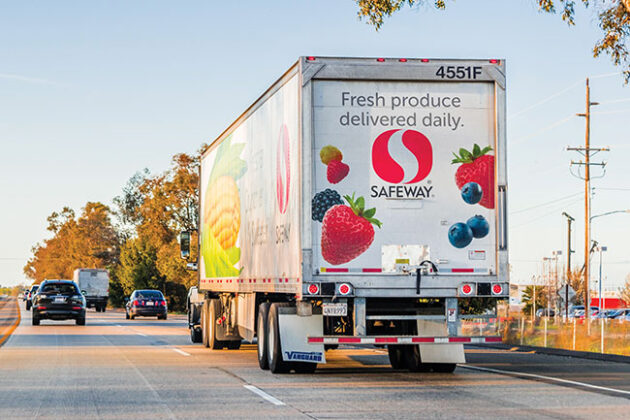
Features
Mapping northern Ontario
Vineland creating technology roadmap for horticulture.
December 5, 2022 By Andrew Snook
 Vineland’s Dan Bath says a lot of new technologies are coming out for controlled environment agriculture, including several for vertical farming applications.
Vineland’s Dan Bath says a lot of new technologies are coming out for controlled environment agriculture, including several for vertical farming applications. Vineland Research and Innovation Centre (Vineland) is building a technology roadmap for horticulture in northern Ontario.
To meet this goal, the Niagara Region-based, non-profit research organization has teamed with the Northern Ontario Farm Innovation Alliance (NOFIA) and the Rural Agri-Innovation Network (RAIN), and the three organizations are conducting a study aimed at identifying barriers and challenges faced by stakeholders in the region’s horticultural sector.
The goal of the project is to provide growers, stakeholders, and communities with information to bring about improvements in the quantity, quality, and availability of fresh local produce in northern Ontario.
The project is being funded in part by FedNor through the Northern Ontario Farm Innovation Alliance.
Vineland has been conducting these technology roadmaps since early 2021. As part of the COVID-19 response, OMAFRA (Ontario Ministry of Agriculture, Food and Rural Affairs) funded all of the growers associations in Ontario to conduct these technology roadmaps to understand how the labour disruption caused by travel restrictions would impact the labour available to each sector; and what technological solutions there would be in the short-, medium- and long-term in terms of development to mitigate some of the risks of labour shortages, explains Dan Bath, research scientist, Horticultural Automation, Vineland.
“And so, Vineland was commissioned by three different growers associations to conduct these technology roadmaps. And from that, we really learned what a positive impact they can have on the organizations,” he says.
Vineland has now taken that concept and applied it to several different organizations where it can perform industry research and market research to assess the technological needs of a given group. Earlier this year, Vineland arranged with NOFIA to conduct a technology roadmap specifically for horticulture in northern Ontario.
“Northern Ontario is not typically a place for horticulture, due largely to the climate being less amenable to horticulture than other places in Canada, particularly southern Ontario. Also, the parameters of the soil are not very conducive to horticulture. So, we’ve been working with NOFIA as well as RAIN to work on this roadmap,” Bath says. “Our process starts with interviewing key members of the group – in this case, northern Ontario horticulturalists. We’ve interviewed farmers, key stakeholders in the community to assess what the demand issues are faced by people in the horticulture sector in northern Ontario.”
Based on those interviews, Vineland conducted an online survey that was distributed more widely across the sector, where it could have participation from both consumers and producers of horticultural products in Ontario.
“In the last phase, we use that information to conduct industry research and market research. At Vineland, we have horticultural scientists as well as market researchers who dive into the issues that are identified through the interviews and surveys to try to see what technologies or technological solutions might be out there that may not be used to their full potential at the moment in the area,” Bath explains.
The project is still ongoing, and Vineland’s team is finishing up the industry research phase.
“What we’re doing now is making sure we’re having a look at how we think the research will impact various communities in northern Ontario, in particular, Indigenous communities. We will be meeting with representatives of Indigenous communities in the next month to ensure that our research will impact all communities in northern Ontario, including the Indigenous,” Bath says.
Once that process is complete, Vineland will release a report to NOFIA and the association will disseminate it through their website. Vineland is also planning on presenting its findings at the Ontario Agricultural Conference early next year.

Dan Bath, research scientist at Vineland, says transportation issues not only impact the price of goods for the consumer, but also the freshness and quality.
Photo: © Sundry Photography / Adobe Stock
Remote challenges
Northern Ontario growers face a variety of challenges when it comes to operating in the horticultural sector. The first one they struggle with is a low population density.
“The population density is much lower than other places, so the access to labour is much more restricted. In particular, the access to skilled labour because it’s so far from larger cities,” Bath says.
Another challenging factor is the geography.
“Because communities are so spread far apart, there is a need for transportation of supplies for horticulture, as well as for the produce itself, those costs go up considerably,” Bath says. “One pretty interesting solution that we’ve encountered in our research along the way comes from a company called AgriTech North in Dryden. They are developing a distribution network for produce and related products and supplies, trying to maximize the efficiency with which materials are transported for food production in northern Ontario.”
He adds that transportation issues not only impact the price of goods for the consumer, but also the freshness and quality.
“Produce that even comes from southern Ontario, or other places in North America, going to northern Ontario has anywhere from one day to several days of additional travel time, which reduces the quality of the produce that’s available to consumers,” Bath says. “This really highlights the need for a more local production in northern Ontario.”
He adds that local production in northern Ontario could take on several different forms.
“There may be some technological solutions to increase the possibilities for outdoor agriculture, a more traditional style of agriculture. But also, we’re seeing a lot of new technologies coming out for controlled environment agriculture,” Bath says. “That could be as simple as placing row covers onto outdoor agriculture, all the way up to vertical farming applications that are using entirely LED lighting, completely controlled climate fertilizers, and other inputs.”
Vineland is also noticing that growers in northern Ontario are paying significant attention to what the inputs are for their agricultural pursuits.
“In southern Ontario we take advantage of the fact that we can just drive to the hardware store or the farm supply store and have access to basically anything we need. Whereas, especially in remote communities in northern Ontario, they really have to think about how they might access equipment and supplies for their horticultural pursuits,” Bath says. “We’re also finding there are new strategies and technologies coming out for how to simplify the logistics of getting supplies needed for agriculture. Some controlled environment agriculture solutions also try to build a circular economy of supplies. Some controlled agriculture solutions are making efforts to use waste products from the horticulture as inputs, either as energy inputs through biodigesters or through various composting methods to reuse materials as fertilizers. Controlled environment technology producers are also keeping in mind how to address the problem of replacing parts when they fail. And there are some pretty interesting strategies on how to do that as well.”
In the end, Vineland’s main goal for producing these technological roadmaps is to help growers and consumers throughout northern Ontario.
“Our No. 1 goal is to have a positive impact on the region’s horticulture. That could take many forms. It could be simply raising awareness of technologies that are available or identifying gaps in technologies – basically problems that need solutions,” Bath says.
Print this page